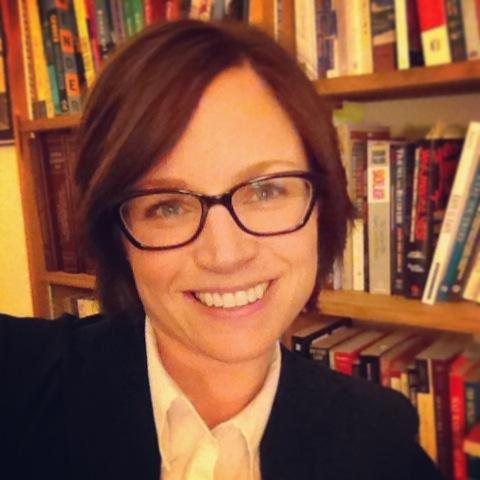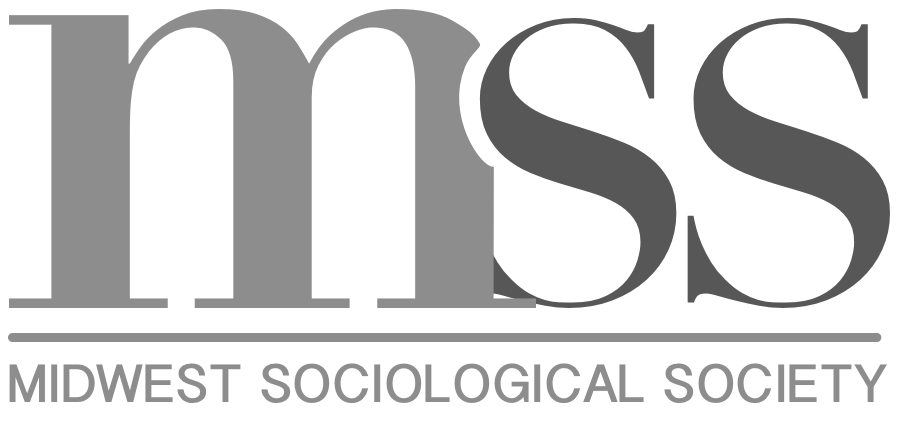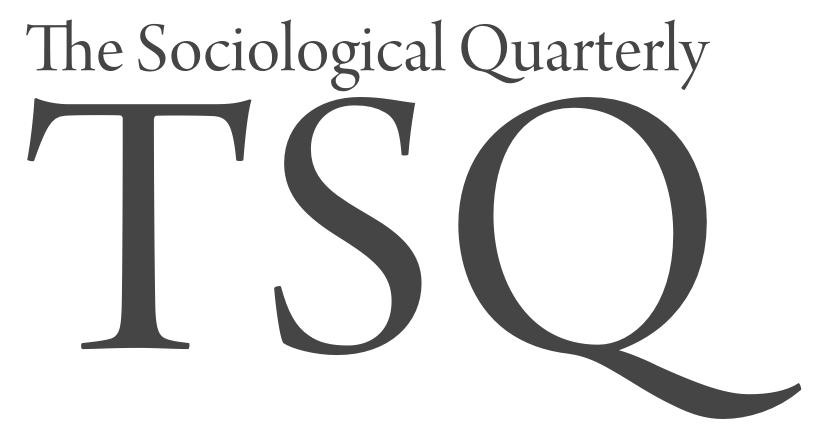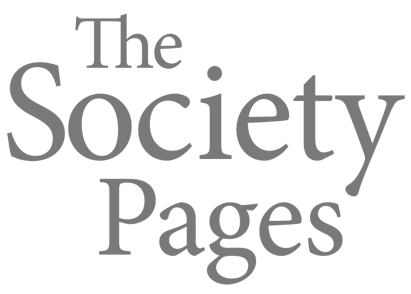In this issue of Meet the Midwest!, we spoke with Dr. Heather Hlavka from Marquette University in Milwaukee, Wisconsin, about her work in gender, sexual assault, and public sociology. Read more below!
1) Much of your previous work has focused on the intersections between youth subjectivities, gender, sexuality, and sexual violence. Can you tell us about your recent or in-progress research and how these areas intersect with your prior work? In the field of sociology more broadly, where do you see yourself going next when it comes to researching these topic areas?
Feminist writings have long documented the public silencing of women and children, especially as it has related to abuse and exploitation. To varying degrees, discursive strategies and ideologies have operated to undermine or dismiss survivor’s speech. Alcoff and Gray (1993: 265-66) argue that, through history, survivor’s speech has been “absolutely prohibited, categorized as mad or untrue, or rendered inconceivable…and therefore could not exist within the dominant discourses.” This quote has always affected the way I approach my research and teaching, and is the thread connecting my work on youth subjectivities, sexual violence, and institutional spaces. As a feminist sociologist, I take an intersectional, sociolegal approach to examining narrative and ideology in various settings such as the forensic interview and the courtroom. Society often treats women and children as unable to make sense of their own experiences, whether when adults oversimplify or impose their versions of reality onto children, or when adversarial structures of adjudication force women and children to fit into dominant cultural narratives of victimization thereby silencing their experiences. There are many opportunities to examine these interconnections in law and policy, institutional structures and the justice system, and micro-interactions in social movements regarding who can express, participate, and inform interventions.
Even so, there has been a lack of theoretical scrutiny given to studies of sexual violence, especially as it concerns children. Carine Mardossian (2002: 743) has stated, “Rape has become academia’s undertheorized and apparently untheorizable issue” and Nancy Whittier (2016: 96) argued that given the large proportion of sexual assault survivors under the age 18, feminists must attend more to the role of sexual violence of children in systems of inequality that has both structural and cultural dimensions. I find it essential to address how social locations like age, gender, race, sexuality, ability, and class are central intersectional dimensions for understanding the experience of sexual violence and the unequal means of redress.
My current work with colleague, Sameena Mulla, focuses on how expertise informs the evolving landscape of sexual assault adjudication in the U.S. We analyze the presentation, use, and impact of forensic evidence and medical expertise in Milwaukee County rape trials as a social and cultural phenomenon. Focusing on legal proceedings reveals deeply entrenched cultural norms about sexual violence having to do with how various publics understand rape, forensic investigation, and the law itself. We argue that these cultural contexts are embedded within interpretive commitments that privilege legal interpretations over testimony, as they are intertwined with the medicalization of the harm of rape. There are many intersectional identities at work in the courtroom, and age, race, sexuality, and class are part of the subtle calculus of testimonial vulnerabilities. We believe that our ethnographic research reveals the invisibility of individuals within the legal system, and the human costs borne by all the participants in sexual assault adjudication.
2) Sexual violence is a difficult, but necessary and important, topic of sociological study. How did you first become interested in this area and what motivates your research? What advice would you offer to other sociologists who are interested in researching sexual violence?
I have been studying sexual violence since the early 1990s as a first-generation college student at the University of Minnesota, Twin Cities. As with many young people starting college, I was shocked by the numerous disclosures of sexual violence from friends I had just made, to old friends finally feeling safe enough to share their assaults from childhood and adolescence. I became interested in learning more about the physical, emotional, and psychological consequences of sexual assault, and psychology courses offered some insight. But then, some of my friends dropped out of school due to the emotional toll sexual assault took on their lives. We didn’t know where to go for help when the perpetrators remained on campus and sat in some of the same classes, or when we were met with disbelief and blame from authorities. I finally took my first sociology course and began to understand how social institutions and systems work to silence survivors. I was introduced to C. Wright Mill’s The Sociological Imagination and how personal troubles and public issues are related. Sociology provided the means to better understand what was happening with my friends, within institutions, and the roles of power, knowledge, and voice. Soon thereafter I became a victim advocate. I volunteered for campus crisis-line intervention services and peer education seminars. To this day I remain interested in connecting the personal with the public - how the cultural representations and state responses to sexual violence affect people in abusive situations and play a significant role in interpretation and disclosure.
This is worthwhile but difficult work, perhaps especially in academic fields that largely reify objectivity and promote solo-authored research. My advice to those interested in working on sexual violence is to stay true to your voice, focus on self-care, and collaborate with others whenever possible. I have the good fortune of working with colleagues on my current research in the courts, and I cannot overemphasize the impact healthy collaborations can have on a sense of support, sanity, and feeling grounded and safe during sometimes traumatizing research experiences. It is always healthy to take a step back, regroup, and share the vulnerabilities that make us human and connect us to others and our work. We often keep going and going, taking on more and pushing forward, and forget that yes, we can take a break; and that taking a break is resiliency at work.
3) In your own words, how would you define “public sociology?” How important is public sociology to your topic areas, particularly in light of the #MeToo movement?
Returning to C. Wright Mills, sociology has always been public sociology because it can render the invisibility of sexual violence visible. Sexual assault – or what many view as a “personal trouble” – is a product of the organization of a misogynist, racist society. For me, public sociology means being accessible and accountable to multiple publics through activism, advocacy, scholarship, and teaching. As important as is academic expertise in framing “personal troubles” as structural and systemic, I believe public sociologists must also grapple with how to decenter voices of privilege, including voices of white feminists and sociologists. The #MeToo movement and #TimesUp displayed the double-edged sword of raising the voices of some while overlooking the marginalization and oppression of others. The more widely-read victim disclosures of sexual assault involved privileged, white women often with the social, cultural, and economic privilege to access public resources and support networks. Rather than degrading those efforts, I want to point out that a more self-reflexive public sociology can integrate the tenets of intersectional feminism to resist the reinforcement of structural violence. I have tried to accomplish a conscious sociology that can engage with a variety of publics by centering the voices of children and youth of color. But the most important public sociology is likely that which does not get published and is not accompanied by fanfare, but rather works to form inclusive coalitions to understand communal trauma that decenters privilege.
Public sociology also occurs in our classrooms, or, as Michael Burawoy (2005) said, our “first captured public.” For me, public sociology has always been a conversation with my students and in my community. I reach a public of over 200 students each year, and they get to apply their sociological imagination in deciding how, when, and where they will share this information with their own publics. I am also accountable to my research participants, my community, neighborhoods, and research sites, for how I go about my research ethically, and how I analyze and share it with others. I believe that the responsible public sociologist is accountable for how their work is used in, and by other publics, for better or for worse
Photo Courtesy of Dr. Heather Hlavka
Be sure to check out more conversations with Midwestern sociologists on “Meet the Midwest!”
Additional Reading:
Alcoff, Linda and Laura Gray. 1993. “Survivor Discourse: Transgression or Recuperation?” Signs 18:260-290.
Burawoy, Michael. 2005. “For Public Sociology.” American Sociological Review 70: 4-28.
Mardorossian, Carine. 2002. “Toward a New Feminist Theory of Rape.” Signs 27:743-774.
Miller, C. Wright. 1959. The Sociological Imagination. New York: Oxford University Press.
Whittier, Nancy. 2016. “Where are the children? Theorizing the Missing Piece in Gendered Sexual Violence.” Gender & Society 30:95-108.



